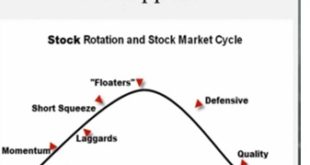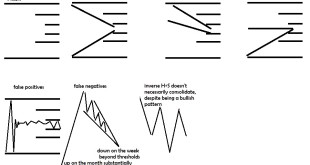Nat gas is now very overbought, but since it was down for years it is more than possible that it remains overbought for some time just like the market did following the March 2009 low. The indicators on a daily basis don’t really consider what the action has been for years and years before that.Perhaps taking some of profits out now would be a good idea. However, we saw this coming and lets refresh what was said after the bottom call.
http://ibankcoin.com/hattery/2012/04/16/hat-buy-ung-options/
“Volume really feels like capitulation and bottom looks to be in for now. The reason I am so excited about this bottom is because super oversold moves tend to rally longer after bottom. So don’t worry about if it hits overbought, I would hold this THROUGH overbought.”
We are overbought.It’s easy to claim a win after you made a great call. But how many people who called the top in 1929 lived to wait it out until 1932-1933 when it really bottomed? How many people that called the bottom in 2009 or top in 2007 lived to take advantage of the 09 bottom and the entire rally after? Taking some profit off the table is not a sin, but exiting a position that is going to multiply it’s investment 10 fold when you don’t even have a double is.
Patience is certainly a virtue that I am not naturally blessed with and need to remind myself vigorously to just chill out sometimes. I gotta get my contrarian mindset right.
see Jessie Livermore’s book, Reminiscences of a Stock Operator
In it, he describes an old man named Mr. Partridge who would always walk around telling people “it’s a bull market you know”.
“Why, this is a bull market!” The old fellow said it as though he had given a long and
detailed explanation.
“That’s all right,” said Elmer, looking angry because of his disappointment. “I know this
is a bull market as well as you do. But you’d better slip them that stock of yours and buy
it back on the reaction. You might as well reduce the cost to yourself.”
“My dear boy,” said old Partridge, in great distress “my dear boy, if I sold that stock now
I’d lose my position; and then where would I be?”
Jessie Livermoore: “And right here let me say one thing: After spending many years in Wall Street and after
making and losing millions of dollars I want to tell you this: It never was my thinking
that made the big money for me. It always was my sitting. Got that? My sitting tight!”
How many people made 100% since the 2009 bottom?
Well this isn’t an endorsement to hold forever, in fact the market is shaping up to get pretty volatile over the next coming months into the dangerzone of late summer into the fall with October historically being the worst of all months and meanwhile with euro crisis still shaping up to be full of plenty of grenades and landmines…. But it’s one of conviction. Know what you said when you bought it and what your plan was and stick to it. This mindset is DRASTICALLY opposite than what it is for a swing trader which is one of being completely flexible. And if you are going to be quick to do anything, make sure it’s quick when cutting losses, not taking profits. Your profits not only have to be enough to give you a comfortable rate of return, but also to make up for any past and future losses you may experience. While you can’t hit one out of the park every time and may have to know when to take what the market gives, most definitely your gains should be larger in magnitude than your losses, unless they are the same size and you are taking high percentage gains. There is a style for everyone, but one law that you cannot beat is the law of mathematics….
If you have a strategy of using your entire bankroll and taking profits at 30% gains and cutting losses at 10%, winning 1 time after 3 losses actually isn’t often enough. Because 1 10% loss 3 times will put you at 72.9% of your total and a 30% gain will not make back 3 consecutive 10% losses. a 30% gain will put you back to 94.77% of what you started with. If you want to beat the odds, you have to have a much greater edge and/or superior money management so that you risk close to the same total dollar amount each time without risking an increasingly larger percentage of your total.
One great way to do that is to ride out your gains to give yourself a much greater upside than downside. If you are willing to ride out your UNG bet and take a 100% loss, then you really need to ride out your gains to make over double your money and that is if you assess that you have a 50% chance of losing it all and 50% chance of a double. Of course, if you are using options and leverage your probability of a 100% loss is greater, but the amount of gain needed to produce a double is also greatly reduced.
However, with that being said, reducing the position size to what it once was is still not a terrible idea. If you had say a 10% position in natural gas through UNG and the price has increased 40% to 14%, reducing it back closer to the 10% position you started with is okay. However, don’t forget what you set out to do, and that is find a BIG winner and continue to hold it until it greatly appreciates in price, so unless you need to raise cash from somewhere, and can’t find a better area, you probably really don’t want to reduce your position all that much. But if you bought options your gains are larger and selling a bit more if it works with your rules or risk management system is probably just fine. I still think we go higher, but a pause at some point is not out of the question. In fact, it’s still possible we have not bottomed yet, I doubt it, but it’s still possible.
If you enjoy the content at iBankCoin, please follow us on Twitter



